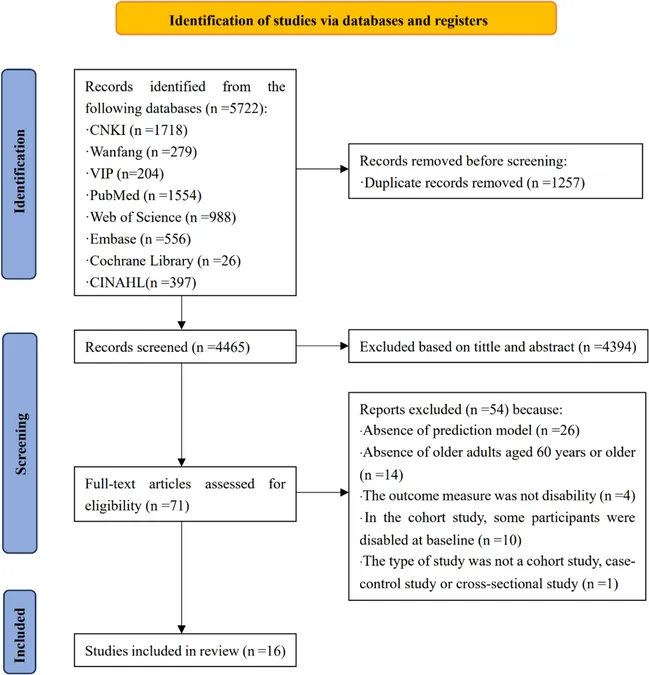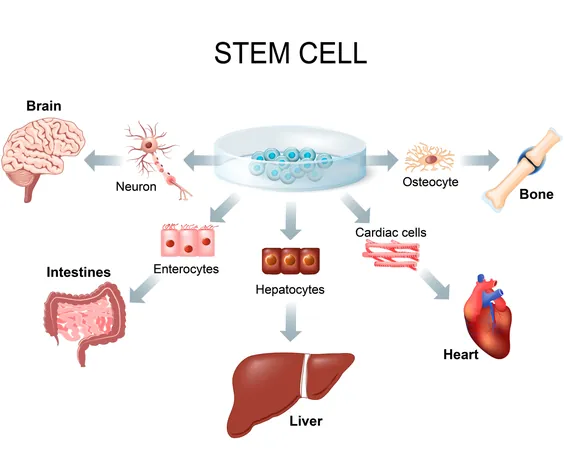
Unveiling the Reality of Disability Prediction Models in Older Adults: A Comprehensive Review and Future Directions
2024-10-02
Author: Jia
Background
As the elderly population continues to grow, the prediction of disability in older adults has become increasingly crucial. Despite a growing array of prediction models, their effectiveness varies widely, raising concerns about quality and reliability.
Objectives
This article aims to systematically review existing studies on risk prediction models for disability among older adults and critically assess their quality and clinical applicability.
Methods
We conducted a thorough literature search across multiple databases, including PubMed, Embase, Cochran Library, and more, covering articles published until June 30, 2023. Utilizing standardized tools such as the CHARMS checklist and PROBAST assessment, we extracted data and evaluated the risk of bias and clinical value from selected studies.
Results
Out of 5,722 articles initially identified, 16 studies representing 17 unique prediction models were included. The sample sizes ranged dramatically from 420 to 90,889 participants. The models primarily employed logistic regression, Cox proportional hazards regression, and advanced machine learning techniques. C statistics or area under curve (AUC) values varied from 0.650 to 0.853, with nine models exceeding an AUC of 0.75, indicating good discriminatory ability. However, a significant finding was the high risk of bias associated with all included studies, with only two models demonstrating acceptable clinical value.
Conclusion
While some prediction models show promise, the overall quality and applicability are concerningly low. Future research must adhere to the TRIPOD statement and PROBAST framework to develop more robust and scientifically sound prediction models. Enhanced methodologies and transparent reporting will ultimately improve predictions and healthcare interventions for the burgeoning elderly population.
Global Aging Trends and Disability
The aging trend of the global population poses significant public health challenges. The World Health Organization predicts that by 2030, one in six people will be aged 60 or older, equating to approximately 2.1 billion individuals by 2050. Disabilities not only diminish the quality of life but can significantly increase mortality rates among this demographic. In the U.S., for instance, 41.7% of individuals aged 65 and above report some form of disability, while China anticipates that the number of disabled seniors will exceed 77 million by 2030.
Understanding and predicting disability in older adults is critical for implementing timely interventions that can enhance their independence and overall quality of life. Early identification of high-risk groups through reliable prediction models can pave the way for targeted preventive measures.
Advancements in Risk Prediction Models
The literature reflects a considerable number of studies exploring prediction models for disability in older adults. With advancing analytics, the application of machine learning has gained traction, fostering the development of nuanced models that leverage diverse predictors like age, chronic diseases, and lifestyle behaviors. However, the discussion also highlights a pressing concern regarding methodological rigor.
The prevalent practice of not using adequate sample sizes and failing to follow established methodological guidelines has hindered the predictive power of many studies. In fact, within the analyzed models, a significant portion did not validate their findings or adequately report calibration, which limits their utility in clinical practice.
Moving forward, researchers must prioritize understanding what mechanisms underpin disability, incorporating findings into model design while ensuring rigorous testing and validation. Interdisciplinary collaboration that encompasses gerontology, epidemiology, and data science will be essential to develop superior predictive models.
By providing insights into the current landscape of disability prediction models, this review underlines the urgent need for better methodologies to support the aging population's health needs. Catching these deficiencies now will yield practical benefits to an increasingly vulnerable group.
Call to Action
For stakeholders—including healthcare providers, researchers, and policymakers—addressing the inadequacies in existing models can significantly drive advancements in disability management and elder care. As the population ages, optimal strategies that enhance prediction and prevention of disability are not just beneficial; they are crucial for fostering healthier, more independent lives for older adults.


 Brasil (PT)
Brasil (PT)
 Canada (EN)
Canada (EN)
 Chile (ES)
Chile (ES)
 España (ES)
España (ES)
 France (FR)
France (FR)
 Hong Kong (EN)
Hong Kong (EN)
 Italia (IT)
Italia (IT)
 日本 (JA)
日本 (JA)
 Magyarország (HU)
Magyarország (HU)
 Norge (NO)
Norge (NO)
 Polska (PL)
Polska (PL)
 Schweiz (DE)
Schweiz (DE)
 Singapore (EN)
Singapore (EN)
 Sverige (SV)
Sverige (SV)
 Suomi (FI)
Suomi (FI)
 Türkiye (TR)
Türkiye (TR)